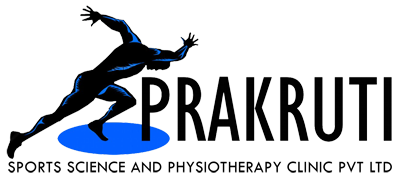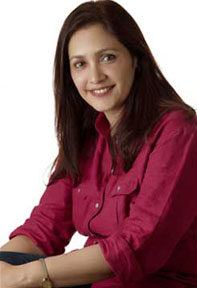Recently I read an article on “Demand and Supply”, and while normally this would not be immediately interesting to me, it caught my attention because the “demand” was the demand for knee replacement surgeries and the “supply” was the amount of orthopaedic surgeons qualifying each year (and more specifically those that specialise in replacement surgeries)!!! Further it turns out that by 2020 the demand is going to be far more than the supply and most patients requiring these surgeries will end up waiting for a date!!
Why has Knee replacement become almost an epidemic now? Does this mean there is more osteoarthritis in the world? Or is it because osteoarthritis today is more severe than it used to be? Is it because now that the surgery is available everyone wants a better, more mobile life; or is it that the surgery itself is being projected as the only alternative we have?
There are many factors involved in the increasing demand for replacement surgeries. Let us examine a few.
It is a fact that obesity, lifestyle changes, and lack of planned and regular exercise have resulted in an increase in the number of patients suffering from Arthritis. After leading sedentary lives for several years, people often choose “fun”, high-impact exercises to get fit “quick”. Furthermore the social pressure of modern times to “remain young” and “fit” (that no one seems to resist) sometimes results in the normal, age-related wear and tear of joints flaring up when a new exercise program begins.
New options in replacement surgeries (like “uni-compartment knee replacements”) are then being sold to this relatively-young population as “preventive” surgeries. What they are essentially supposed to prevent is “Total knee replacement”. Effectively meaning that a surgery is being promoted to prevent another surgery! So when a 45 year old who has probably done some unnecessary/ ill-advised exercises gets symptoms of knee pain and some investigations point towards significant wear and tear in one part of the knee joint, he/ she is likely to be advised this kind of surgery. Furthermore, she will probably be told that if she does not get this surgery done, she might require a total knee replacement in 2-3 years. She may also be warned that the uni-compartment option may not be available in 6 months because the other side of her knee will start wearing out soon. But these surgeries have not been around long enough to allow collection of reliable statistical data to collaborate this claim, and In fact no one can accurately predict how much wear and tear a joint will suffer and how the disease will progress.
I would like to call this century the “Instant access century”... Everything is fast paced and instantaneous, and no one wants to wait for anything. We get angry if we have to wait a few extra seconds for the elevator, frustrated if we cannot connect fast enough to the internet, we keep several windows open on our desktop so we don’t need to wait for the pages to load, we transfer money instantly all over the world, and we have instant messaging and instant recharging: the examples of our growing impatience are several!! We want instant results even from our bodies. What does not work has to be replaced. We throw away machines that do not work; repairing them is a waste of time and money. We apply the same rule to our body parts. We have become too impatient to give time a chance! In fact our bodies have an amazing inbuilt healing mechanism that works if given some time and the correct support/ environment.
In the age of information technology and “Transparency” we are still denied complete information on our own bodies. The first obstacle is of course that the human body is not a machine. The very fact that DNA is a unique identity, that a finger print is never repeated in two individuals proves that studying one, two, or a million bodies will not give us enough knowledge to say that we know it all. The human body is so complex that no one really can understand it completely. Our information is also limited by the fact that we live in a capitalist society, where economic considerations determine all our actions and solutions. Research funds are limited, and the companies that sponsor research are those that have vested interest in the research. Open ended research often can take several years or decades to show results and then the result may not be the one desired by the party that is funding it. Often then, research is close-ended, or starts with an assumption, and the scientists then only have to prove that the assumption is correct or wrong. This makes the research process easy, swift, financially viable and predictable. It suits everyone fine, and no one really ends up losing because no rules are broken and no real harm is done. Though in most life-saving systems this kind of quick research is acceptable and beneficial, in degenerative or lifestyle related disorders it is not necessary and totally unacceptable. It denies us the right to complete and reliable information on our bodies and most importantly it denies us the right to choose.
Our education system does not teach us to question research methodology, and all printed material is then accepted as truth till new research then proves it wrong, and then we start believing in the new truth. New medicine, new implants, new cartilage, new incision sites, new sutures, etc. every few months a new research offers us new solutions that last only till the next research proves them lacking. Each new product/ technique is accepted with whole-hearted support and hope. But most of the solutions offered are beneficial to manufacturers of products used, and their research is funded by these companies. Solutions that are simple and do not need manufacturing are not supported by aggressive research and marketing as they do not benefit manufacturers/ pharmaceuticals. These solutions only require qualified professional to implement and hence are not financially beneficial to big companies. They are projected as adjuvant therapies and not the mainstay of management in lifestyle related disorders.
Insurance companies make up the second angle in this financial triangle of decision- makers. Insurance companies in India do not reimburse preventive treatments, or in fact any treatment that is not surgical/ does not require admission in a hospital. Only surgical and post-operative treatments are reimbursed. This means that even expensive replacement surgeries seem cost-effective to a patient looking at various options for arthritis. In fact weight loss, physiotherapy, exercise facilities, swimming pools all seem expensive by comparison. After surgery, fees for most of these can be claimed and most patients might decide to first get operated and then try these conservative options for economic reasons.
The third angle is the media, which is getting stronger by the day. PR companies and newspapers together promote replacement surgeries as the only answer for osteoarthritis and its management. On “Arthritis Day” large articles on new research in replacement surgeries, implants, and surgeons grab a large part of the dedicated space. Articles on weight control, exercise, positive thinking, and other conservative treatments are hidden between the larger articles. This blatant manipulation of information and coverage deprives us of our right to make an informed and educated choice.
The consumer, in this case the patient and his/her family is surrounded by various data, inputs, advices, proofs and economic compulsions all guiding them towards “replacement” as the treatment of choice, presented to them as an instantaneous and modern solution to knee pain. Hard evidence in form of articles, research, and friends and family that have already been operated and seem to be happy; family pressure in terms of over-zealous and caring children and spouse; a deep pain that seems endless and frustrating; and a vision of a pain free and active future, all create a subconscious pull towards a seemingly easy solution that will finally end your misery.
Is the patient only an innocent victim of a manipulative and conniving nexus between parties with vested interests then? Do we have no control over these decisions and are we not in some way responsible for the circumstances that put us into this situation?







